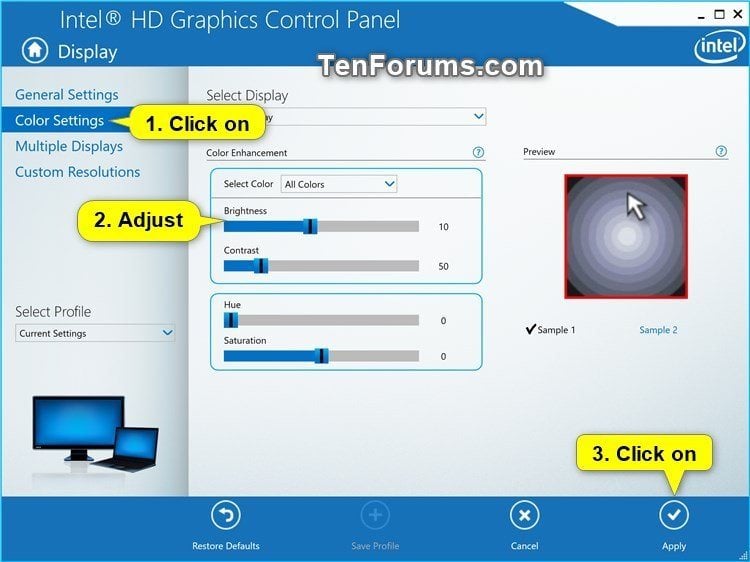Select action center on the right side of the taskbar, and then move the Brightness slider to adjust the brightness. (If the slider isn't there, see the Notes section below.) Some PCs can let Windows automatically adjust screen brightness based on the current lighting.
- What the “Brightness” Setting Actually Does. Unlike “brightness” on your phone or computer screen, the brightness setting on most televisions actually doesn’t control how bright or dim your TV is. Instead, it controls the black levels. (A better word for this setting might be “lightness”.).
- Control your browser's global screen brightness. This extension reduces the screen brightness level for both daytime and nighttime periods based on user-defined values.
- How do I adjust the brightness on my computer? You can adjust the brightness of your display to make your screen easier to read or to conserve battery power. Click the Start Menu and select Settings. Move the Brightness level slider bar to the desired setting. Click the X in the upper right corner to close.
- Aug 04, 2019 Now, one of the brightness keys changes my window to full screen and the other pulls up something I am too technologically inept to figure out or describe. My mute button takes me to a google chrome help screen, my increase volume button opens a search bar of some sort, and the decrease volume doesn't seem to do anything.
Some OEM systems have internal displays that are connected using external connectors such as HDMI. For those configurations, Windows has the ability to designate exactly one display panel to support the system software brightness control.This feature only allows OEMs to indicate to Windows that an external connector display supports brightness control; OEMs must still implement the hardware brightness control and integrate that with the graphics driver as they would for an integrated connector display. This feature also does not support the ability to control the individual panel brightness on multiple display panels.
Brightness
General requirements
A new DWORD registry value will be added: “BrightnessControl”.Registry Path: HKLMSYSTEMCurrentControlSetControlClass{4D36E96E-E325-11CE-BFC1-08002BE10318}XXXXWhere XXXX is for the targeted individual display.
- The first bit in this registry value defines the non-internal monitor brightness control support.
- The second bit defines an ACPI override that forces ACPI brightness to be used.
- The remaining 30bits are reserved and must be zero.
OEMs that would like to enable brightness control on a non-internal panel must ship their own monitor.inf (see sample inf below) and set this registry value appropriately.

OEMs should only define the “BrightnessControl” registry value when it is required.
The brightness support control override (the first bit) should only be used on a system which does not have an internal display on an internal connector type on any display adapter. If a system does have an internal display on an internal connector type, then the first enumerated display will receive the brightness control.
ACPI brightness override
The ACPI brightness override is not the preferred mechanism to use for brightness control, but is included for completeness, in situations where there is no other option for brightness control.
The ACPI override (the second bit) is valid on both internal and external displays but must only be applied to exactly one display on the system.
The ACPI override is intended to be used in conjunction with the brightness target override, and only when the display driver does not already provide brightness support. This allows OEMs to implement their own display backlight control via ACPI.
A secondary use for the ACPI override is during OS/driver development when brightness support fails on mobile systems, which can happen for several common reasons. In this case, the ACPI override is intended only as an interim solution; the driver brightness control should be used for the finished product.

In the case where this registry value is set for external connectors, the OS will limit the system to one exposed brightness control.
Brightness Of Screen Control
Sample MONITOR.INF file fragment
Brightness Control Windows10
The following is an incomplete sample INF that outlines the above:
Note
Brightness Control Apk
OEMs need to provide a monitor.inf file that has the proper hardware ID in order to ensure that the generic Microsoft monitor.inf is not used.
